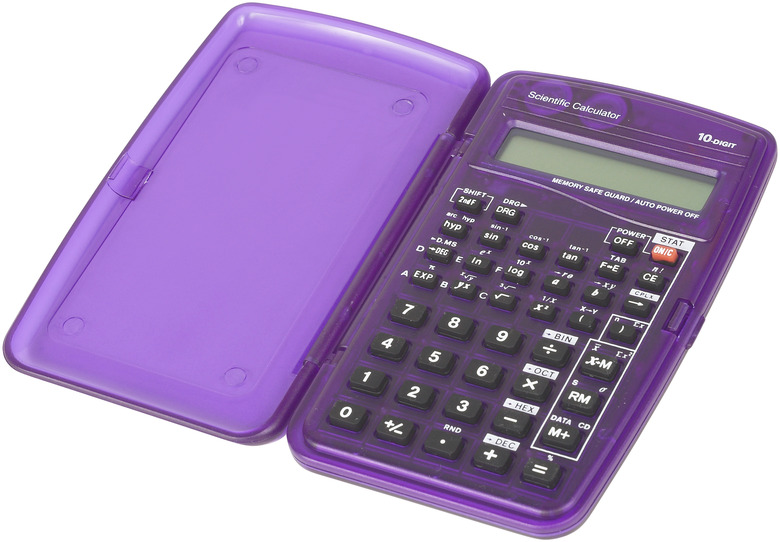How To Use The TI-84 Plus Calculator To Convert Sine, Tangent & Cosine To Angles
You can easily convert the basic trigonometric functions into angles measured in degrees or radians using a TI-84 Plus calculator. The TI-84 Plus is capable of going in both directions — from the angle to the trigonometric measure and back. This guide will use degrees instead of radians for consistency, but the procedure for radians is the same — simply set the calculator to radians mode instead of degrees in the first step.
Converting from Trigonometric Functions to Degrees
Step 1
Set your calculator to Degrees mode by pressing the MODE key, pressing the down arrow until you reach the row with the options "Degree" and "Radian," highlighting "Degree" using the right arrow key, and pressing ENTER. Now all angles will be measured in degrees.
Step 2
Enter the inverse trigonometric function of the trigonometric value you wish to convert to degrees. First press the 2ND key, then press the key for the trigonometric function at hand. For example, if you wish to convert the sine of .5 into degrees, press 2ND and then press SIN. The display will show sin^-1, or inverse sine. Now enter .5 and a closing parenthesis.
Step 3
Press ENTER and collect your answer. The result should be a number, expressed in degrees. For example, if you entered sin^-1 of .5 and hit enter, the calculator will display 30, which is 30 degrees. Be sure to remember the closing parenthesis.
TL;DR (Too Long; Didn't Read)
In this guide, the text "sin^-1" refers to inverse sin, which will appear on the calculator's buttons and display screen as "sin" with a small, raised "-1" after it. The same is true for the appearance of the other inverse trigonometric functions.
Cite This Article
MLA
Gellert, Andrew. "How To Use The TI-84 Plus Calculator To Convert Sine, Tangent & Cosine To Angles" sciencing.com, https://www.sciencing.com/use-ti84-plus-calculator-convert-sine-tangent-cosine-angles-5608/. 24 April 2017.
APA
Gellert, Andrew. (2017, April 24). How To Use The TI-84 Plus Calculator To Convert Sine, Tangent & Cosine To Angles. sciencing.com. Retrieved from https://www.sciencing.com/use-ti84-plus-calculator-convert-sine-tangent-cosine-angles-5608/
Chicago
Gellert, Andrew. How To Use The TI-84 Plus Calculator To Convert Sine, Tangent & Cosine To Angles last modified March 24, 2022. https://www.sciencing.com/use-ti84-plus-calculator-convert-sine-tangent-cosine-angles-5608/
